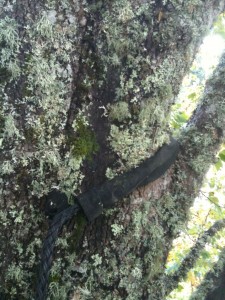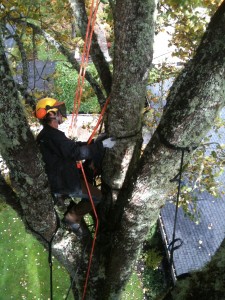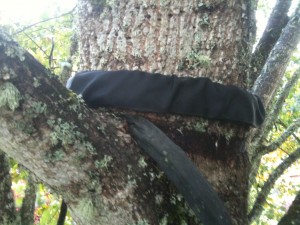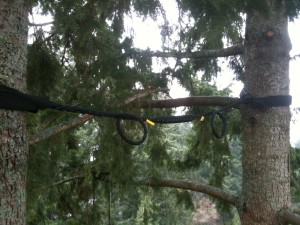I want to take a moment to talk about cabling in trees. A few months back I was inspecting a Cobra cable in a Tulip Poplar (Liriodendron tulipifera) at Panorama City in Lacey, WA. The cable had been installed 6-8 yrs previous by 2 qualified and competent arborists I can personally attest for. Although the cable had been installed properly, it had been completely consumed by new tree tissue in one area and partially in another. This girdling effect unfortunately counters the initial goal of making the tree safer and can interfere with nutrient transport and limb/trunk stability . Luckily this one looks like it will adjust with follow up maintenance pruning and hopefully the tree will grow around and adjust to having the small portion of material inside the two trunks. In this case the grounds
management changed and the follow up inspection was lost in the shuffle.
This potential issue is something that needs to be addressed. If an arborist is going to install a cable, then it needs to be inspected within 2 yrs. Cobra recommends doing it in 2-4. A lot of things change and are forgotten in 4 yrs., let alone 2. I recommend 2. It is truly the responsibility of the arborist to do the follow up. Ideally there is a contract signed by both parties agreeing to do the follow up inspection, at least from the ground and potentially by climbing.
If the cabling is done properly and If the tree is inspected regularly, it is a potential asset. If adjusting to the cable is needed and neglected, the system is an expensive extra cost and doesn’t do what it is designed to do. It should allow restricted movement; but not too restricted, which happens when the cables are not adjusted when needed. (Unless it is a static cabling application, where trunk/branch movement is not the goal)




